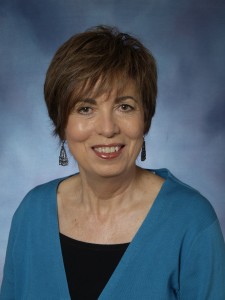Dr. Nicki Rippee feels your pain.
If you’re gymphobic, if you feel intimidated by the sight of perfectly toned bodies working out on machines you barely understand, or if you simply don’t know where to begin, Rippee’s been there.
“This is what I do,” says the Abilene Christian University professor of exercise science and health, “and there are some fitness centers I’ve been in, and I feel intimidated.”
That’s why, as she both began and ended an interview about the overall wellness philosophy embodied in ACU’s new Royce and Pam Money Student Recreation and Wellness Center, she emphasized five words:
“This is not a gym.
“This is not a fitness center,” Rippee said. “That’s not our goal. We have a much broader path. This will be a place where people could integrate all the parts of what we call wellness.”
So what is wellness?
It’s principally an academic concept, but its application to real life is being a healthy person in more than simply physical fitness. It includes emotional, intellectual, social and spiritual health — and Rippee and colleague Dr. Kerri Hart would add environmental health, as well.
“You can’t put pieces of your life into individual compartments,” Rippee said. “You need the whole.”
As a result, the Student Recreation and Wellness Center, as implied by its name, will of course house plenty of workout equipment and have ample space for exercise, but it also will house the offices of the Medical and Counseling Center for Care and intramurals, as well as feature a demonstration kitchen for nutrition classes and boast a leisure pool and other amenities designed to foster student interaction and community.
The focus on whole wellness also would take place in the classroom, with the Lifetime Wellness class, part of each student’s core requirement and usually taken by freshmen. And the focus on being healthier should lead to improved results in the classroom.
“The physical part is pretty obvious to everybody,” Rippee said. “The intellectual part is not obvious. Being healthy, you do better in the classroom. … This is not just about my body looking different. This is about my whole quality of life.”
The wellness center will have a different feel — brighter and more open — than a typical fitness center, Rippee said, while features such as the elevated track and leisure pool are rarities in commercial facilities. The goal is to have a building that becomes a focal point for student social activity.
“What I hope we see is a lot of activity at all hours,” said Rippee, who with Hart was one of the principal planners of the facility during her tenure as department chair through 2008. “We want to have it open as much as possible.”
The social aspect is one part of a “current” Hart envisions moving between the various pieces of the wellness whole.
“I picture it as similar to a learning hospital,” Hart said. “It’s a learning wellness center. There’s research going on, there’s a hub of activity, there’s social connection being made, there’s fitness, there’s healing.”
